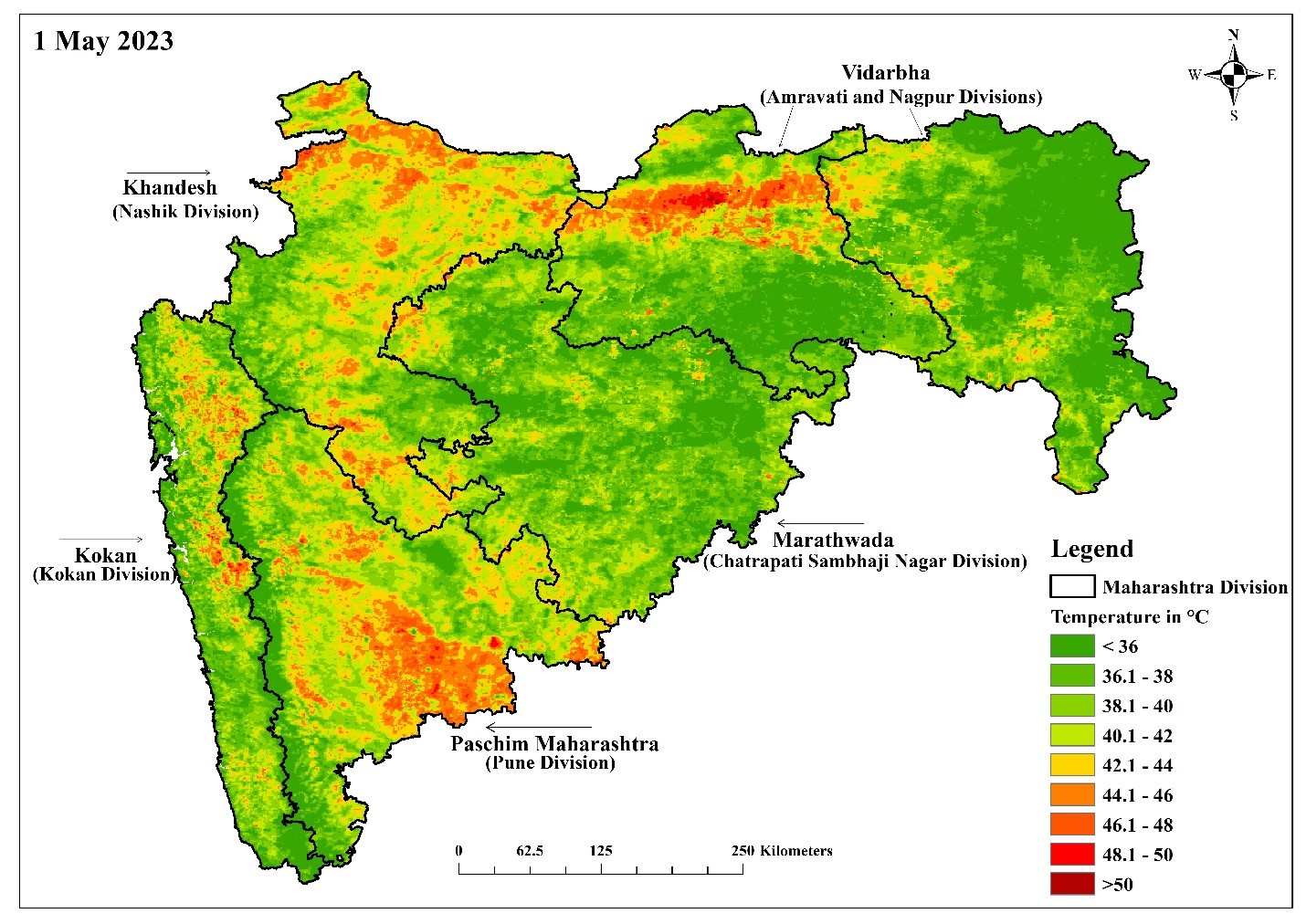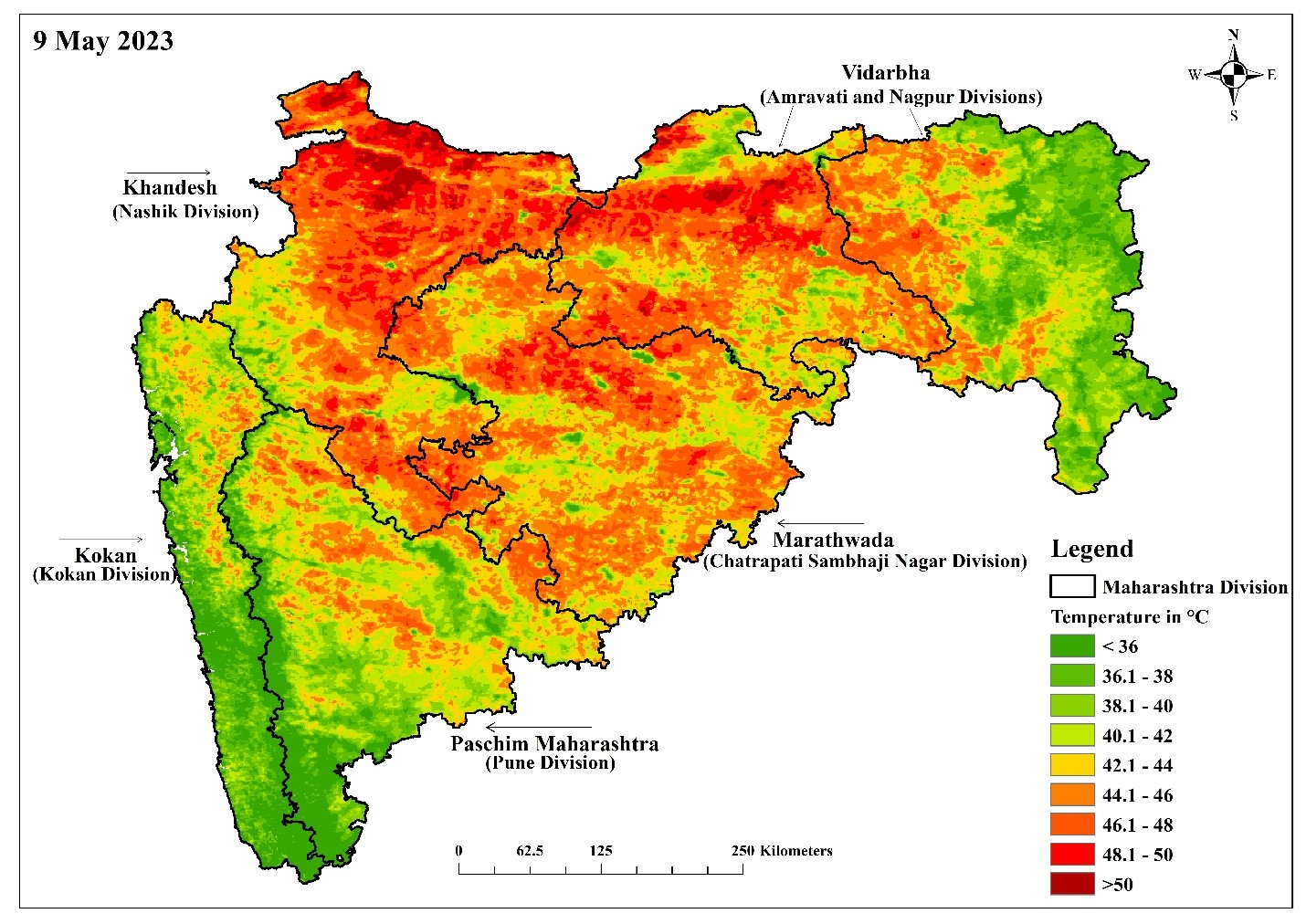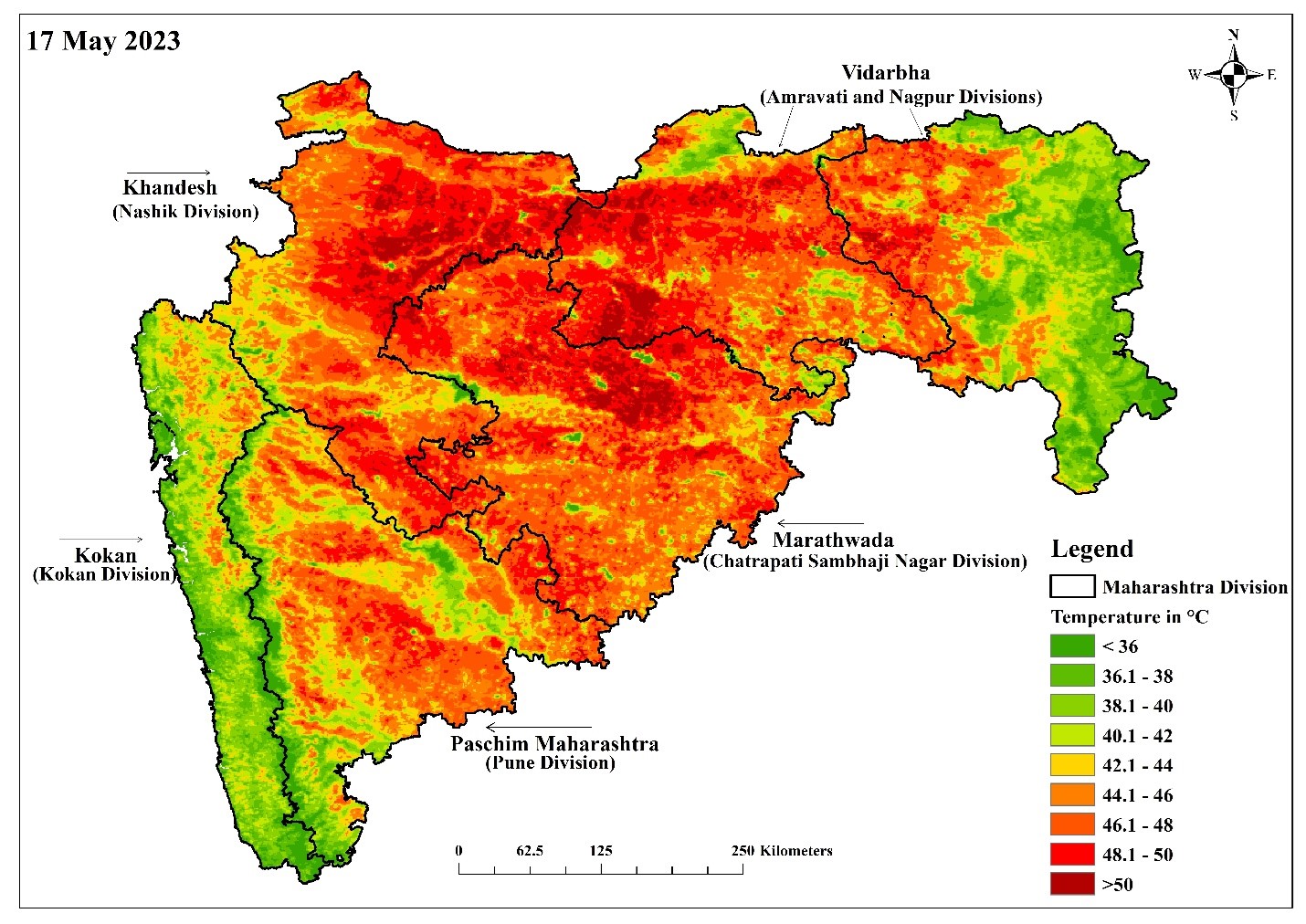By Ajit Jadhav & Priya Sinha
This blog is supported by The Honeywell Hometown Solutions India Foundation (HHSIF) under the ‘Integrated Water Resources Development and Promotion of Ecosystem-based Adaptation in Maharashtra and Telangana – A Practice and Knowledge Embedded Approach.’
Understanding the Significance of Land Surface Temperature (LST)
Land Surface Temperature (LST) is a critical parameter for monitoring global changes1 in heat flux and surface temperature, offering valuable insights into surface energy balance, environmental climate change, ecosystem dynamics, and natural resource management2. The rise in LST levels has been linked to the occurrence of extreme weather phenomena, including droughts and heat waves, which have severe negative impacts on ecosystems, livelihoods, and biodiversity. The increasing global trend of LST is causing significant concerns and widespread apprehension due to its detrimental consequences.
Escalating LST in Semi-Arid Regions of India: Drivers and Vulnerabilities
The escalating land surface temperatures in the semi-arid regions of India are primarily driven by global warming, with consistent increases observed day by day. Multiple factors influence the LST of a specific location, such as surface air temperature, soil moisture, soil roughness, vegetation type, elevation, and the balance between shortwave and longwave radiation. These elements collectively contribute to the determination of LST and its variations across different regions.
In India, the semi-arid tropics constitute a substantial portion, approximately 75%, of the cultivated area, accounting for 131 million hectares out of a total of 174 million hectares. These regions, primarily in Andhra Pradesh, Maharashtra, Tamil Nadu, Karnataka, and Rajasthan, are highly susceptible to drought. The impact of drought extends to the livelihoods of 265 million people residing in rural areas within these districts. The vulnerability of these regions is exacerbated by a combination of factors, including insufficient and unpredictable rainfall, extreme temperatures, and intense solar radiation3,4.
Assessing LST in Maharashtra: Utilizing MODIS Satellite Data
In Maharashtra, several regions including Vidarbha, Marathwada, Konkan, and parts of Western Maharashtra have been significantly impacted by soaring land surface temperatures. There have been instances where the LST has risen above 40 degrees Celsius and persisted for more than 72 hours. As the Earth’s surface temperature increases, the surrounding air absorbs the heat, leading to a subsequent rise in atmospheric temperatures. This, in turn, creates favorable conditions for the formation of heatwaves.
At W-CReS, we decided to assess the current state of LST variation in Maharashtra. For this, we employed MODIS LST satellite data5. This dataset offers a spatial resolution of 1 km and was acquired through the sensors present on the Terra and Aqua platforms. These sensors capture information using different wavebands, including visible, near-infrared, short-wave infrared, and thermal ranges. Given that May is associated with the highest summer temperatures throughout Maharashtra, we focused our analysis on this month. We obtained the latest data from May 1st to May 17th, 2023, and conducted a comprehensive examination of land surface temperatures.
After processing the LST data for May, we obtained the following division-specific results for various regions in Maharashtra during the period spanning from the 1st to the 17th of May 2023. Our study encompassed divisions including Marathwada (Chatrapati Sambhaji Nagar division), Vidarbha (Amravati and Nagpur divisions), Khandesh (Nasik division), Konkan, and Paschim Maharashtra (Pune division).
The division-specific approach provides a detailed understanding of LST dynamics in Maharashtra.
Maharashtra’s LST on May 01, 2023

Fig. 1 indicates the variation in the land surface temperature of Maharashtra on May 1st, 2023. In Maharashtra, temperatures typically start rising during the first week of May. However, this year, owing to moderate rainfall in the last week of April, there was a decrease in the land surface temperature across the region. The overall land surface temperature in Maharashtra showed values below 38 degrees Celsius. However, certain regions in Western Maharashtra, such as Solapur, Sangli, and Satara, experienced LST ranging from 46 to 48 degrees Celsius. Similarly, in Vidarbha, parts of Amravati, Akola, and Wardha witnessed temperatures as high as 48 degrees Celsius.
Maharashtra’s LST on May 09, 2023

Fig. 2 illustrates the variation of land surface temperature in Maharashtra on May 9th, 2023. Upon examining the figure, a noticeable increase in LST becomes evident. The LST had significantly risen, reaching a staggering 48 degrees Celsius from the initial 36 degrees Celsius in regions including Marathwada, Vidarbha, Khandesh, and Western Maharashtra. In certain parts of Khandesh, the LST even exceeded 50 degrees Celsius. This alarming trend signified an upward trend in land surface temperature, which could have had detrimental effects on the land itself, crop growth, and other environmental factors.
Maharashtra’s LST on May 17, 2023

Fig. 3 illustrates the variation of land surface temperature in Maharashtra on May 17th, 2023. Upon analyzing the image, striking observations were made. The land surface temperature saw a significant and concerning increase throughout Maharashtra during this period. Regions including Marathwada, Vidarbha, Khandesh, and Western Maharashtra experienced LST soaring to as high as 48 to 50 degrees Celsius. In particular, Khandesh, Vidarbha, and Marathwada recorded numerous locations surpassing the 50 degrees Celsius mark. Additionally, during this time, the IMD (India Meteorological Department) issued heatwave alerts for Maharashtra.
Based on the available data till 17th May, the trend of LST was an increasing one. If it continued further, it might have led to detrimental effects on soil health and disrupt the environmental equilibrium, exacerbating existing challenges like high temperatures, heightened water evaporation, and frequent heat waves. These compounding factors could create a range of issues that demand immediate attention and effective mitigation strategies which need further study and analysis.
Conclusion
The analysis of land surface temperature in Maharashtra reveals a concerning trend of escalating temperatures, particularly in semi-arid regions such as Marathwada, Vidarbha, Konkan, and parts of Western Maharashtra. During the month of May 2023, there was a significant increase in land surface temperature in regions such as Khandesh, Vidarbha (Amravati and half portion of Nagpur divisions), and Marathwada surpassing the 50 degrees Celsius mark. This rise in temperature poses serious threats to soil health, water resources, agriculture, and the overall environmental balance.
However, regions with forests and dense vegetation, such as Kokan and a portion of Nagpur division, experienced comparatively lower LST, due to the cooling effect of rainfall and ample vegetation cover.
The impacts of rising land surface temperatures extend to both rural and urban areas, endangering crop yields, livelihoods, and ecosystems. Urgent measures are required to mitigate and adapt to these temperature increases. This includes efficient water resource management, adoption of sustainable agricultural practices, and enhanced preparedness for heatwaves. Moreover, global efforts to reduce greenhouse gas emissions and combat climate change are crucial for long-term mitigation of land surface temperature rise.
Sustainable development and climate resilience should be prioritized in Maharashtra, necessitating collaboration among government bodies, communities, and stakeholders. It is essential to implement climate-smart policies, raise awareness about the issue, and foster adaptive practices. By taking proactive measures, Maharashtra can effectively address the challenges posed by increasing land surface temperatures and secure a sustainable future for its communities and natural resources.
References:
- Prakash, S., & Norouzi, H. (2020). Land surface temperature variability across India: a remote sensing satellite perspective. Theoretical and Applied Climatology, 139, 773-784.
- Avdan, U., & Jovanovska, G. (2016). Algorithm for automated mapping of land surface temperature using LANDSAT 8 satellite data. Journal of sensors, 2016, 1-8.
- http://www.ced.org.in/docs/inecc/arid_booklet/Arid-3-Arids.pdf
- http://www.assar.uct.ac.za/assars-work-maharashtra
- Z. Wan, Hook, S., Hulley, G. 2021. MOD11A2 MODIS/Aqua Land Surface Temperature/Emissivity 8-Day L3 Global 1km SIN Grid V061. NASA EOSDIS Land Processes DAAC. https://doi.org/10.5067/MODIS/MOD11A2.061
Also Read:
El Niño and La Niña: Unraveling the Ocean-Climate Connection and Its Impact on Rural India





